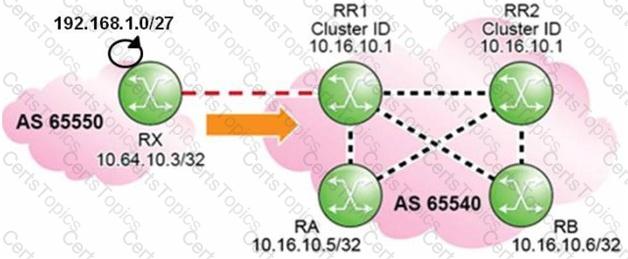Nokia Related Exams
4A0-102 Exam







The user of an Alcatel-Lucent 7750 SR wants to see the effect of changing an import policy immediately. What is the best command to force re-evaluation of the import policy with minimal impact?
Click the exhibit.

Given that ISP 1 and ISP 2 are Tier 2 providers, and that ISP 3 and ISP 4 are Tier 1 providers, what is the most likely relationship between the ISPs?
Click the exhibit.

Routers RR1 and RR2 are route reflectors with the same cluster-ID. How many updates for prefix 192.168.1.0/27 are received at router RR1?